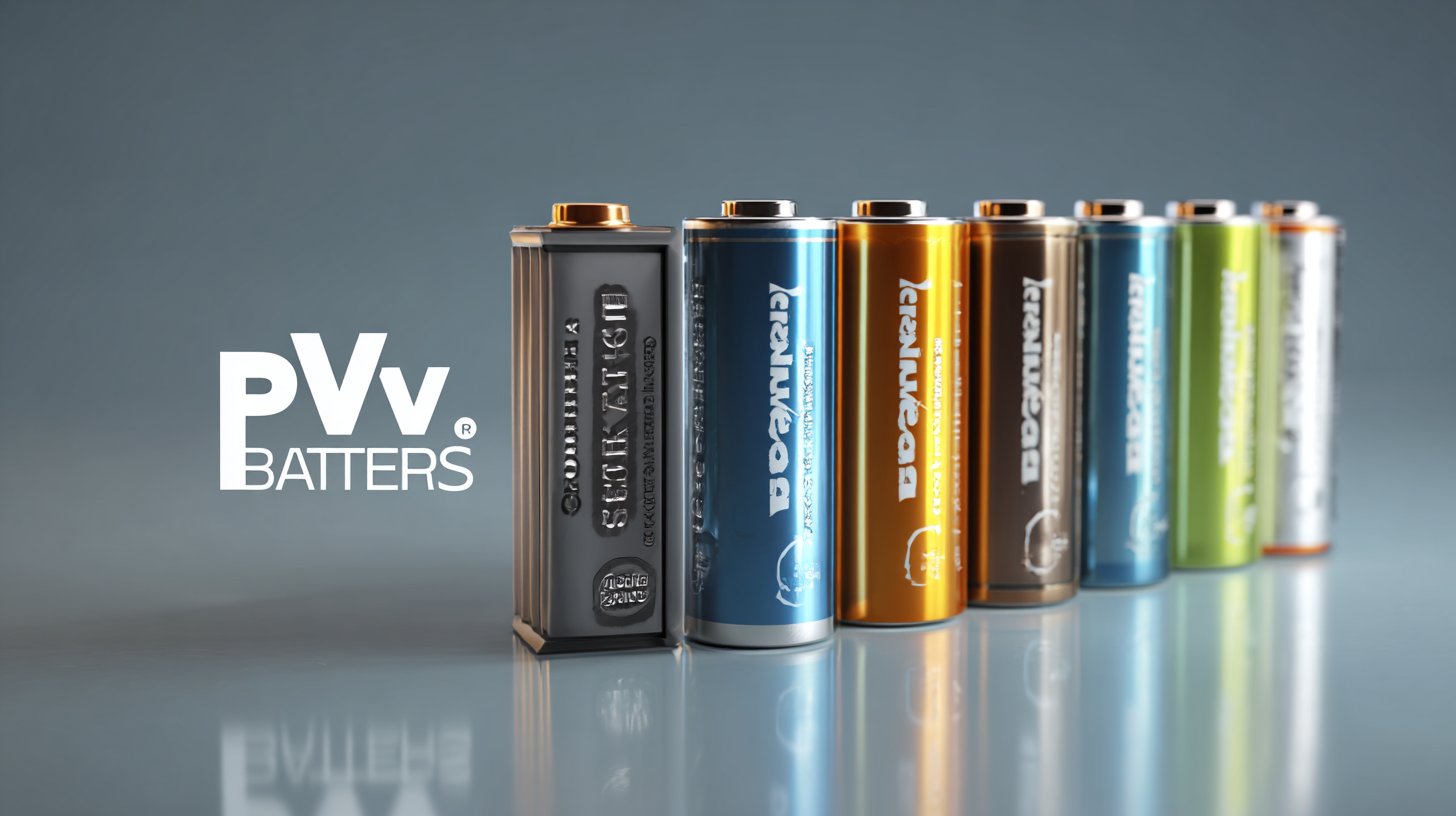The global solar energy market is witnessing unprecedented growth, with the total installed photovoltaic (PV) capacity reaching over 1 terawatt (TW) for the first time, according to the International Energy Agency (IEA). As renewable energy sources become increasingly critical to sustainable development, the demand for efficient and reliable PV batteries has surged, with a projected market value exceeding $20 billion by 2026. Originating from China's top factories, these batteries are setting new standards in quality and performance, earning global trust and recognition. This ultimate comparison of the best PV batteries across various markets highlights not only their technological advancements but also the competitive landscape driven by innovation and sustainability. By evaluating different models and brands, we aim to provide insights on how these batteries can empower users and support the transition to greener energy solutions.

The global PV battery market is witnessing significant growth as renewable energy adoption accelerates, driven by technological advancements and environmental policies. Recent reports indicate that the market size for photovoltaic (PV) batteries is projected to reach approximately $24 billion by 2025, expanding at a compound annual growth rate (CAGR) of over 20%. This surge is primarily fueled by the increasing demand for energy storage solutions that enhance the efficiency of solar power systems, especially in residential and commercial applications.
As we analyze trends leading to 2025, it becomes clear that key regions such as Asia-Pacific are leading the charge, with countries like China and India at the forefront of deploying innovative battery storage technologies. In contrast, North America and Europe are not far behind, driven by governmental incentives and a growing emphasis on sustainability. Factors such as cost reduction in battery technology and improved performance specifications are also playing a crucial role in shaping this market.
Tips: When considering investment in PV battery systems, focus on reputable brands known for their reliability and efficiency. Additionally, pay close attention to warranty terms and performance guarantees, which can provide peace of mind as technology continues to evolve. Finally, ensure that your selected system is compatible with existing solar installations to maximize both efficiency and return on investment.

As the demand for renewable energy solutions continues to surge,
photovoltaic (PV) battery technologies have emerged as a critical
component in optimizing solar energy utilization. Comparative reviews of the leading technologies, including
Lithium-ion,
Lead-acid, and
Flow batteries, reveal distinct advantages and applications.
According to the International Energy Agency (IEA), global installed
PV battery capacity is expected to exceed 15 GW by 2025,
a significant increase from 6 GW in 2020, highlighting the
rapid advancement and adoption of various battery technologies.
Lithium-ion batteries dominate the market due to their high
energy density and efficiency, accounting for over 80% of installed capacity
as per BloombergNEF reports. This technology offers a cycle life
of 10,000 cycles and retains nearly 90% of its capacity after 10 years.
Conversely, Lead-acid batteries, while more affordable,
typically provide only 300-1,500 cycles, making them less desirable for
long-term residential applications. However, they remain popular in developing markets due to lower upfront costs.
Emerging Flow battery technologies, recognized for their
scalability and longevity, are being increasingly integrated into large-scale storage solutions, potentially expanding
their market share significantly in the coming years.
The global market for photovoltaic (PV) batteries is witnessing remarkable growth, driven by increasing investments in renewable energy and advancements in technology. Regions such as North America, Europe, and Asia-Pacific are leading the charge in adopting PV battery systems, emphasizing the decentralized generation and storage of solar energy. This trend reflects a strong shift towards sustainability and energy resilience, allowing consumers to optimize their energy usage and reduce reliance on traditional power grids.
As the demand for energy storage solutions intensifies, the global stationary energy storage market is anticipated to expand from $90.36 billion in 2024 to an impressive $231.06 billion by 2032. This robust growth, with a compound annual growth rate (CAGR) of 12.45%, highlights the crucial role of battery management systems and energy storage technologies in facilitating the transition to a greener energy landscape. Regions with supportive regulations and incentives are likely to see accelerated adoption, making them key players in the PV battery market.
Furthermore, as the industry evolves, innovations in battery technologies are paving the way for more efficient and cost-effective energy storage solutions. With the increasing emphasis on behind-the-meter energy storage systems, the market is projected to achieve significant milestones, potentially creating lucrative opportunities for both established and emerging companies within the renewable energy sector.
In recent years, solar energy has gained significant traction worldwide, leading to innovative photovoltaic (PV) battery solutions tailored to specific regional needs. One exemplary case can be found in Germany, where Tesla's Powerwall has become a popular choice among homeowners. This battery not only maximizes self-consumption of solar energy but also integrates seamlessly with smart home systems, promoting efficiency and cost savings. With Germany’s strong emphasis on renewable energy policies, the adoption of such batteries showcases the country’s commitment to a sustainable future.

Meanwhile, in Australia, the emergence of companies like Sonnen has revolutionized the energy landscape. Sonnen's eco-friendly batteries are designed for community solar sharing, enabling users to harness energy collectively and reduce costs. This approach fosters a sense of community while empowering consumers to take control of their energy consumption. The Australian market's unique challenges, such as high electricity prices and abundant sunlight, have driven the creation of these innovative solutions, highlighting how local conditions can shape PV battery technology and adoption strategies.

These case studies illustrate the diverse approaches to PV battery solutions, reflecting the unique environmental, economic, and social contexts of different countries. As global demand for sustainable energy solutions continues to rise, the exchange of innovative ideas and practices across borders will be essential for advancing technology and enhancing energy independence worldwide.
The future of the photovoltaic (PV) battery industry presents a unique confluence of challenges and opportunities as global markets evolve. As countries prioritize renewable energy sources, the demand for efficient energy storage solutions is skyrocketing. Particularly in regions like Poland, where the solar market is rapidly expanding, local stakeholders face the dual task of scaling production and ensuring sustainable practices in battery manufacturing. This urgency is underscored by the anticipated boom in battery recycling capacity, which must increase significantly to accommodate future growth.

Moreover, the rise of AI technologies in solar farm operations is revolutionizing how energy storage systems optimize their performance. This integration of advanced analytics and machine learning can lead to enhanced grid reliability and efficiency. However, as the electric vehicle market grows and further strains battery supply chains, the industry must navigate the complexities of battery lifecycle management. The outcome will not only define the trajectory of energy storage innovation but also shape global energy policies aimed at a sustainable future.